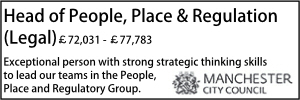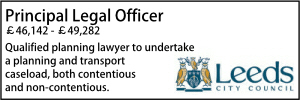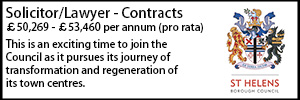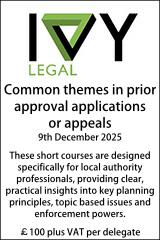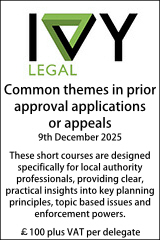Judge rejects claims by parish that nuns conspired to provide district council with false information to secure planning permission
- Details
A High Court judge has rejected claims made by a parish council that an international congregation of nuns conspired to provide false information to a district council in order to obtain planning permission for a former school site.
The background to the case of Chalfont St Peter Parish Council v Holy Cross Sisters Trustees Incorporated [2019] EWHC 1128 (QB) was that until 2006, the defendant – the Holy Cross Sisters – ran a girls' school on land in the village of Chalfont St Peter. A convent also stood on the site, which is referred to as the Grange.
The High Court judge, Mr Justice Swift, said the claims made by the parish council arose out of steps taken by the Holy Cross Sisters, following the school's closure, to obtain planning permission for the Grange. The parish had been opposed to the Holy Cross Sisters’ plans, wanting to move a Church of England school there instead.
Chiltern District Council granted outline planning permission for a mixed-use scheme with 198 dwellings for the site in December 2010.
The parish council unsuccessfully pursued judicial review and local plan challenges in the High Court and the Court of Appeal.
In these latest proceedings the first part of the parish council's case was that to obtain the planning permission and specifically for the purposes of a meeting of the planning committee of the district council that took place on 5th August 2010, some of the Holy Cross Sisters, together with a former employee at the school, conspired to provide false information to the district council about the use to which part of the school site was put when the school was in operation.
The second part of the parish council's case relied on the tort of interference with its interest by unlawful means. For the purposes of this claim too, the parish council contended that some of the Holy Cross Sisters provided false information to the district council.
The parish council relied on substantially the same events in support of the unlawful means interference tort claim as it did in support of the conspiracy claim, save that for the purposes of the former claim, there was no need to demonstrate the existence of an unlawful combination.
Mr Justice Swift said the focus for both claims was what happened in the middle part of 2010, and in particular the events leading up to the meeting of the district council's planning committee on 5th August 2010.
The parish council's case was that the conspiracy comprised Sister Imelda Fleming, a nun who as at 2010 was both Leader of the English province of the congregation, and a trustee of the Holy Cross Sisters; Sister Teresa Mooney, a nun who is a member of the congregation, and who had both taught music at the school and lived at the convent at the Grange for almost the whole of the period since the 1950s; and Michael Kelly, the caretaker of the school from 1980 until its closure in 2006.
Cases of conspiracy brought against two sisters, who were part of the congregation, either fell away or were not pursued by the parish council.
The parish council's contention was that Sister Fleming agreed with Sister Mooney and Mr Kelly that Sister Mooney and Mr Kelly would give false information to Richard Moir, a partner in the firm of Gerald Eve, which had been retained by the Holy Cross Sisters to act on its behalf for the purposes of the application for planning permission to develop the Grange site.
The parish claimed that the conspirators intended that Mr Moir would pass this false information to the district council and cause the district council to grant planning permission.
The parish council's case on unlawful means interference was factually similar. It was that Sister Mooney and Mr. Kelly made false statements, dishonestly in order to induce the district council to grant planning permission, and with the intention to harm the parish council's interests.
However, after a ten-day hearing in February Mr Justice Swift concluded in a judgment published this month that:
- There was no conspiracy to use unlawful means alleged.
- Even if a conspiracy as alleged had existed the parish council had failed to establish unlawful means either in the form of the tort of deceit or in the form of the offence under section 2 of the Fraud Act 2006.
- The intent necessary for an unlawful means conspiracy had not been established.
- For the purposes of the unlawful interference tort the judge accepted that Mr Kelly had made a false statement dishonestly – as to whether a particular area had been marked up for sporting purposes in the period 2001 to 2006. However, (a) that statement did not cause the district council to grant the application for a planning permission; and (b) the grant of planning permission did not amount to interference with any relevant economic interest of the parish council.
- Mr Kelly did not act with the necessary intent to complete the unlawful means tort.
- The parish council suffered no loss by reason of the district council's decision to grant planning permission.
Each of the claims in tort pursued by the parish council failed, and was dismissed.
Sponsored articles
Unlocking legal talent
Walker Morris supports Tower Hamlets Council in first known Remediation Contribution Order application issued by local authority
Contracts Lawyer
Lawyer (Planning and Regulatory)
Legal Director - Government and Public Sector
Locums
Poll









